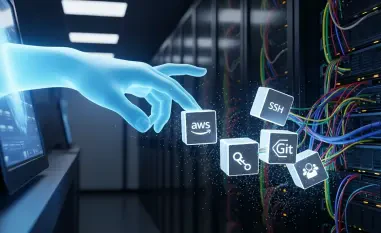Introduction to Progress OpenEdge and Its Importance
Imagine a scenario where a cornerstone of enterprise operations, relied upon by countless businesses worldwide, becomes a gateway for devastating cyberattacks. This is the reality facing users of Progress OpenEdge, a leading platform for developing and deploying mission-critical business applications. Renowned for its robustness, OpenEdge supports a wide range of industries, from finance to manufacturing, by powering complex systems that drive daily operations.
The platform’s significance cannot be overstated, as it underpins vital processes like data management and transaction processing for organizations of varying sizes. Its ability to integrate seamlessly with modern technologies while maintaining reliability has cemented its place in enterprise environments. Key components, such as the AdminServer, facilitate essential administrative tasks, often remotely, making OpenEdge a backbone for operational efficiency.
A critical aspect of its appeal lies in widespread adoption, with thousands of businesses depending on its scalability and performance. This extensive usage, however, also amplifies the impact of any security flaw, turning a trusted tool into a potential liability if vulnerabilities emerge. The discovery of a severe issue in the AdminServer component has thus raised urgent concerns across the industry.
Understanding the CVE-2025-7388 Vulnerability
Technical Breakdown of the Flaw
At the heart of this pressing issue is CVE-2025-7388, a vulnerability targeting the AdminServer’s Java Remote Method Invocation (RMI) interface within Progress OpenEdge. This flaw allows for OS command injection through the manipulation of the workDir parameter, a configuration property that, when exploited, can lead to remote code execution (RCE). Such an exploit enables attackers to run arbitrary commands on the affected system with potentially catastrophic consequences.
The severity escalates due to the elevated privileges under which AdminServer typically operates, often as NT AUTHORITY/SYSTEM on Windows environments. This high level of access means that a successful attack could grant full control over the compromised system, exposing sensitive data and critical operations. The technical nature of this flaw underscores how even a seemingly minor misconfiguration can open the door to significant breaches.
Affected Versions and Scope of Risk
The vulnerability impacts a range of OpenEdge versions, specifically Long-Term Support (LTS) Releases prior to 12.2.18 and 12.8.9, as well as numerous retired versions no longer under active support. Organizations running these outdated or unpatched systems face a heightened risk, as the flaw remains exploitable without the latest updates. The breadth of affected software versions highlights the urgency for immediate assessment and action.
Given the extensive deployment of OpenEdge in enterprise settings, the scope of potential exposure is considerable. Unpatched systems could serve as entry points for attackers, leading to widespread system compromise across networks. This risk is particularly alarming for industries handling sensitive information, where a breach could result in regulatory penalties and loss of trust.
The implications extend beyond individual organizations to entire supply chains, as interconnected systems may also become vulnerable through a single point of failure. This interconnectedness amplifies the need for vigilance, as the ripple effects of an exploited flaw could disrupt multiple stakeholders simultaneously. Addressing this issue promptly is not just a matter of internal security but a broader responsibility.
Challenges in Addressing the Vulnerability
The path to resolving this critical flaw is fraught with operational hurdles for many organizations. Applying patches often requires downtime or reconfiguration, which can disrupt workflows dependent on OpenEdge for continuous operation. Disabling remote RMI, a key mitigation step, may further complicate matters for businesses that rely on this feature for remote administration, creating a dilemma between security and functionality.
Additionally, managing legacy or retired versions of OpenEdge poses a unique challenge, as these systems may lack direct support for updates. Organizations using such outdated software must navigate the complexities of upgrading to supported releases, often requiring significant resources and planning. This process can be particularly daunting for smaller entities with limited IT capabilities.
Balancing the imperatives of business continuity with the urgent need for security measures remains a central concern. Decision-makers must weigh the risks of temporary disruptions against the potential devastation of a cyberattack. This delicate balance requires careful strategizing to ensure that protective actions do not inadvertently hinder critical operations while still safeguarding systems.
Progress Software’s Response and Mitigation Strategies
In response to the discovery of CVE-2025-7388, Progress Software has acted swiftly by releasing patches in OpenEdge LTS Updates 12.2.18 and 12.8.9. These updates incorporate vital fixes, including input sanitization for the workDir parameter to prevent command injection and a default disablement of remote RMI to reduce the attack surface. Such measures aim to fortify systems against exploitation while maintaining core functionality.
Progress has also provided guidance for organizations that require remote RMI for essential operations, allowing re-enablement of the feature under strict conditions. However, this comes with a clear warning about the associated security risks, emphasizing that such a decision should only be made when absolutely necessary. This cautious approach reflects an industry-wide shift toward prioritizing robust defenses over operational convenience.
For those unable to apply patches immediately, temporary mitigations have been outlined to limit exposure. These include restricting network access to the AdminServer RMI port, typically set at 20931, through firewall configurations, reducing privileges under which AdminServer operates, and eliminating unused plugins that could serve as attack vectors. While effective as stopgap measures, these steps are not substitutes for comprehensive updates, and organizations are strongly encouraged to upgrade as soon as feasible.
Broader Implications for Cybersecurity Practices
The emergence of CVE-2025-7388 sheds light on a persistent trend in cybersecurity: the targeting of administrative interfaces with remote access capabilities. Such components, often integral to enterprise software, represent lucrative entry points for attackers seeking to infiltrate systems. This incident serves as a stark reminder of the evolving threat landscape and the need for constant vigilance in software design and deployment.
Proactive vulnerability management emerges as a critical takeaway from this situation, with timely patching playing a pivotal role in safeguarding business-critical applications. Organizations must adopt a forward-thinking mindset, regularly assessing their systems for potential weaknesses before they can be exploited. This approach is essential to staying ahead of adversaries who continuously refine their tactics.
Moreover, the incident underscores the importance of prioritizing security over convenience in enterprise environments. While features like remote access enhance operational flexibility, they must be balanced with stringent protective measures to prevent misuse. Cultivating a culture of security awareness and preparedness is vital for organizations aiming to mitigate risks in an increasingly complex digital ecosystem.
Conclusion and Call to Action
Reflecting on the events surrounding CVE-2025-7388, it becomes evident that unaddressed vulnerabilities in widely used platforms like Progress OpenEdge pose substantial threats to enterprise security. The flaw’s potential for remote code execution through the AdminServer component exposed critical systems to compromise, prompting a rapid response from Progress Software with necessary patches and mitigations.
Looking ahead, organizations need to take decisive steps by not only applying the available updates but also reevaluating their broader cybersecurity frameworks. Implementing regular audits and fostering collaboration between IT and business units can help identify and address similar risks before they escalate into crises.
As a forward-looking measure, adopting advanced threat detection tools and investing in employee training on emerging cyber risks stand out as practical next steps. These actions, combined with a commitment to staying updated on software patches from 2025 onward, promise to strengthen defenses and ensure resilience against future vulnerabilities in an ever-evolving threat landscape.













